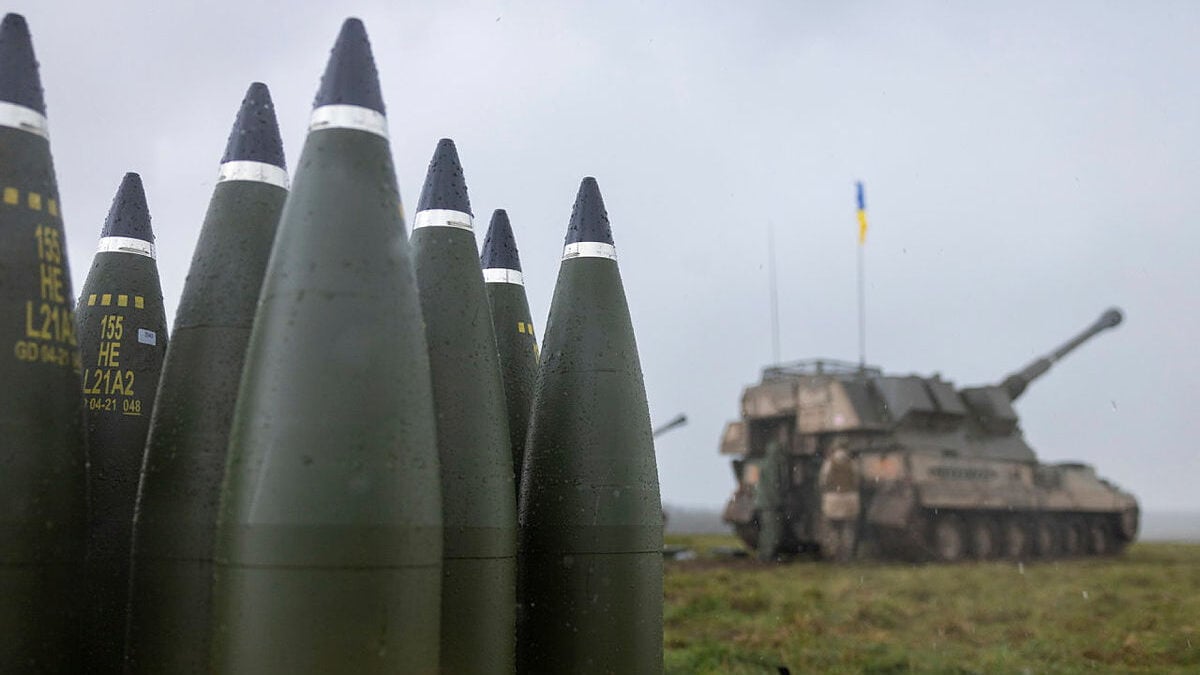
Ukraine President Volodymyr Zelensky and NATO Secretary General Jens Stoltenberg address media at the alliance’s summit in Vilnius, Lithuania (NATO)
BELFAST — Russia’s war in Ukraine again dominated European defense matters this year. As the conflict looks set to enter a third year and fighting continues across strategic towns and enclaves, Kyiv’s path to victory remains uncertain, though it does not appear willing to entertain any peace settlement terms involving sovereign territory being ceded to Moscow.
In the meantime Russia also had to watch on as Finland entered NATO in April. Sweden is expected to follow soon.
Alliance expansion might force Russia to reassess a strategic calculus around a war beyond Ukraine’s borders, but tough questions around just how long Kyiv can defend itself are beginning to be asked. As US presidential elections approach, European leaders are forced to consider how they can sustain military aid should the largest contributor to the cause decide to curtail or end spending altogether.
Politically, a wave of anti-immigrant rhetoric and the rise to power of far right leaders in Europe could undermine support for Ukraine long-term. Slovakia’s decision to stop military aid to Kyiv has already caused harm and damaged any sense of a united front. At an industry level, production trouble remains as leading European weapons manufacturers are still unable to come to terms with a surge in demand for artillery rounds, while difficulties around supplies of explosives show no signs of letting up.

A stack of 155mm artillery rounds sit behind the line of AS90 self propelled guns and their Ukrainian operators (UK MoD)
Additionally, sanctions on Russia have not been as impactful as either Europe or the US might have liked, though Moscow’s dependency on Iran for drones and other weaponry could be held up as a sign of desperation, while a dwindling number of nations are now prepared to do business with the Kremlin.
As the eyes of many in the world recently shifted toward the Middle East, European nations joined the international community in condemning the Oct. 7 attack on Israel by Hamas, though Ireland and Spain have been among an outspoken few in the West who have been heavily critical of Israel’s military response in Gaza.
So then, with that troubling backdrop very much in focus, comes the top five European defense stories from the last 12 months.
[This article is one of many in a series in which Breaking Defense reporters look back on the most significant (and entertaining) news stories of 2023 and look forward to what 2024 may hold.]
1. Netherlands outlines 3-step F-16 training plan for Ukraine, plus $43.4M air defense package
Political debate over whether to provide Ukraine with fighter jets had been rumbling on since the very early stages of the war, chiefly to develop air superiority. Reaching an agreement to train Ukrainian pilots on F-16 fighter jets proved to be no easy feat for a European coalition led by The Netherlands and Denmark, as it first required approval by the US Defense Department, but after gaining Washington’s support, Amsterdam swiftly announced a three step training plan.
Despite Kyiv’s call for the jets to enter the conflict, they are unlikely to ever do so, with the training designed to support a post-war era that includes the Ukrainian air force transitioning to operate only Western made fighters.

Europe’s F-16 training center, located at an air base in Fetesti, southeast Romania, was officially opened in November. (Kajsa Ollongren on Twitter)
2. UK reveals capture of Russian equipment, instructs industry to develop new countermeasures
Open source intelligence (OSINT) videos on social media have long revealed the various tanks, aircraft and ships attacked or damaged in Ukraine or in Russia, but to what extent one side or another has gained any tactical advantage from recovering enemy equipment remains less certain.
So the admission from a UK official that its armed forces had captured Russian systems and handed it off to industry in a bid to develop new countermeasures aimed at defeating those very systems, provided a rare glimpse into a less reported aspect of the war.
3. Finland officially becomes 31st member of NATO alliance
Finland received NATO membership less than a year after applying to join, extending the alliance’s border with Russia by 1,300 kilometers in the process. The end of non military alignment, prompted by Moscow’s invasion of Ukraine, was a truly historic moment, though somewhat overshadowed by Sweden having to wait for membership. The two Nordic nations started the accession process together, but objections from Turkey and Hungary have since led to Sweden having to wait. Finland brings with it a relatively small but formidable fighting force that will soon include a dramatic increase in air power capability once F-35 fifth generation fighter jets arrive in country in 2026.
4. France races for small suicide drones after seeing effectiveness in Ukraine
The growth of drone warfare has been one of the clearest trends to emerge from the war in Ukraine, compelling military leaders to readjust procurement plans or accelerate acquisitions already on the books. France’s decision to cut the Colibri (Hummingbird) small suicide drone program from 19 competitors to two underlined the drive by Paris to secure an overall “base of 1,800” remotely-controlled munitions.
5. Poland buying Korean made MLRS, continuing Seoul spending spree
The eyewatering uplift in Polish defense spending, anchored by a strong partnership with Korean industry, continues to show few signs of slowing down. The numbers certainly bear repeating, with Warsaw, since July, depending on Seoul for equipment, including 1,000 K2 tanks, 672 K9 self-propelled howitzers, 48 FA-50 light combat jets and new K239 Chunmoo multiple launch rocket systems (MLRS).








